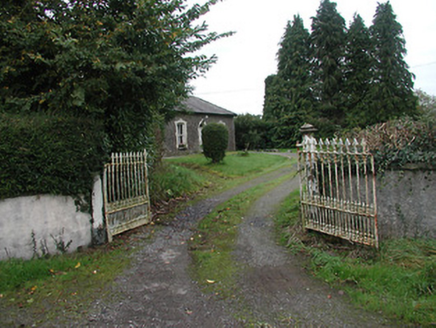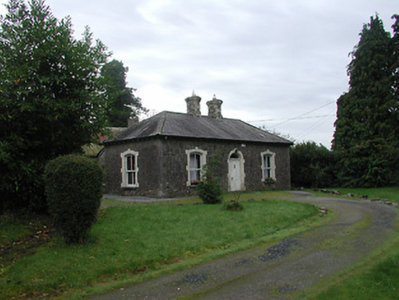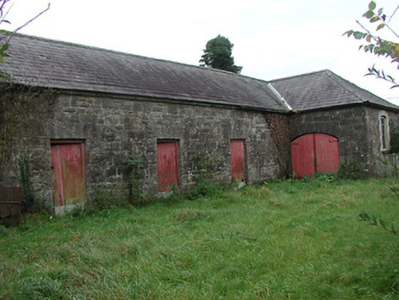Survey Data
Reg No
15401135
Rating
Regional
Categories of Special Interest
Architectural
Original Use
House
In Use As
House
Date
1850 - 1880
Coordinates
237043, 262319
Date Recorded
10/10/2006
Date Updated
--/--/--
Description
Attached three-bay single-storey house, built c.1865, having an earlier house attached to the rear (south). Hipped natural slate roof with overhanging eaves having exposed rather tails and with a central pair of cut stone chimneystacks having brick detailing. Snecked limestone/calp walls with flush limestone quoins to the corners and flush brick block-and-start detailing to the openings. Segmental-headed window openings with stone sills and two-over-two pane timber sliding sash windows. Central round-headed doorway to the main façade (north) having brick block-and-start surrounds, an early timber panelled door and a plain glass overlight. Four-bay single-storey outbuilding on L-shaped plan to the east side of house having hipped natural slate roofs, a projecting stone eaves course, coursed rubble limestone walls, square-headed doorways with timber sheeted doors and a segmental-headed carriage arch to the east side of the 'L', having timber sheeted double doors. Segmental-headed window opening to the west end of outbuilding having brick surrounds matching detailing of windows to the house. Set back from road in own grounds to the southwest of Bunbrosna. Main entrance gates to the east having a pair of timber gate posts supporting cast-iron double gates.
Appraisal
A charming and well-built mid-to-late nineteenth century building, which retains its early form, character and fabric. The contrast between the dark gray limestone/calp walls and the pale colour of the brick surrounds to the openings helps to create an interesting and pleasing appearance. The well-built outbuilding and the cast-iron gates complete the setting of this fine composition, which is a worthy addition to the built heritage of the local area. The detailing of the window opening to this outbuilding, mirrors that to the main building and helps to tie these two buildings together stylistically.





